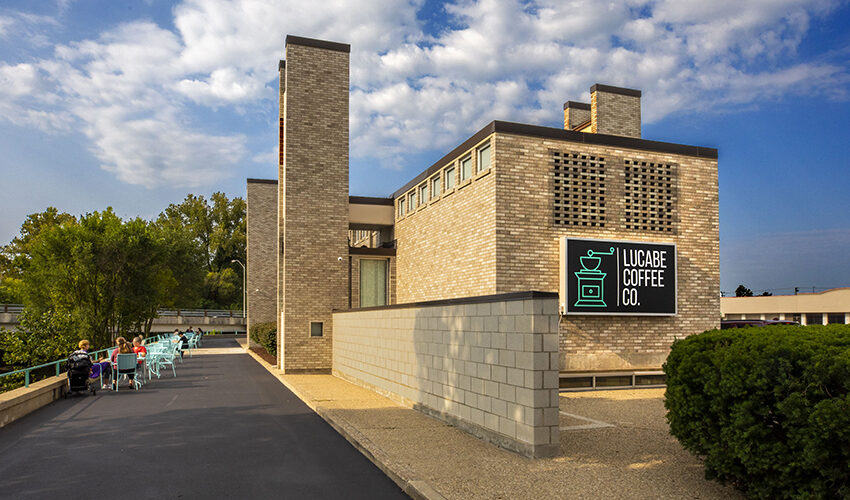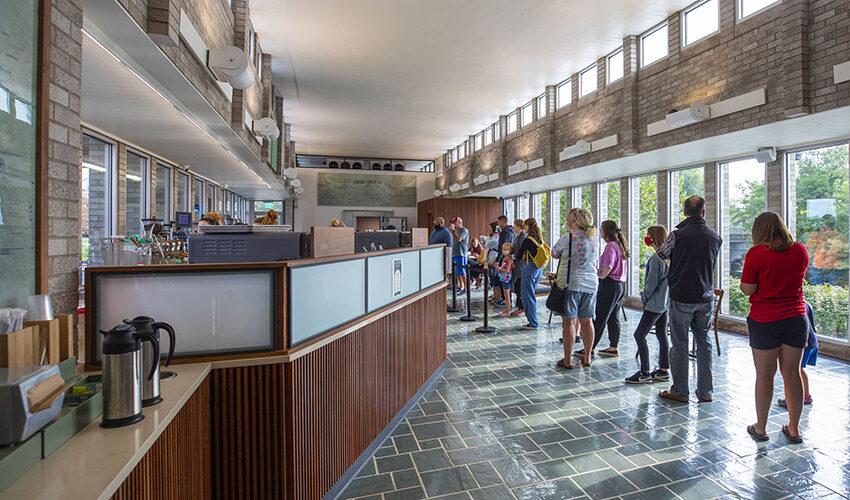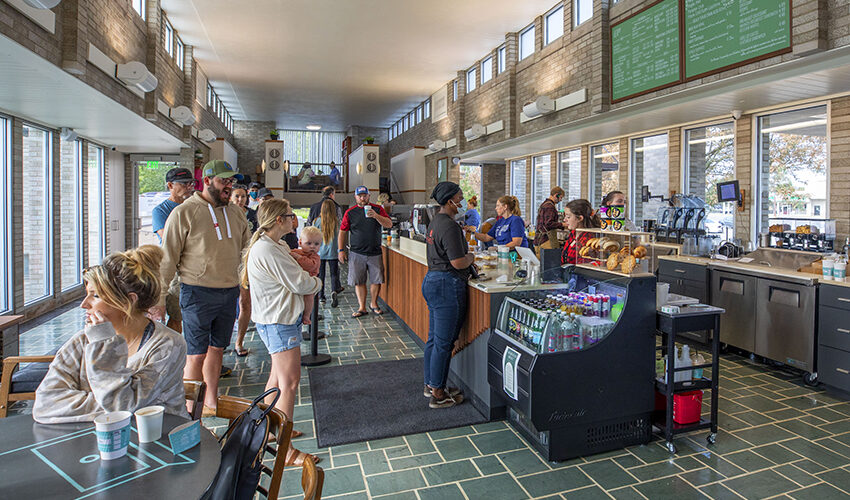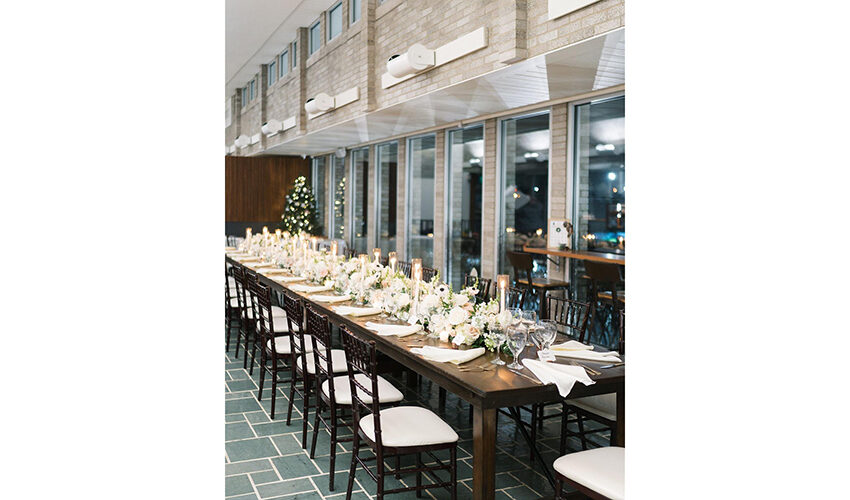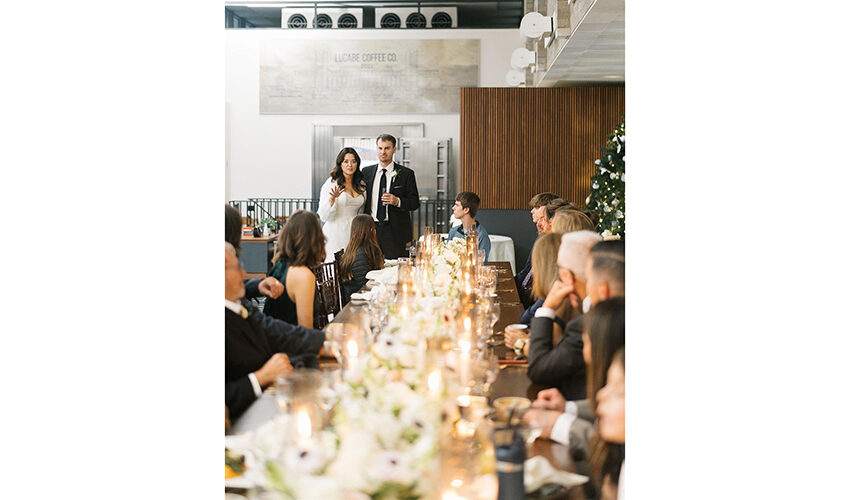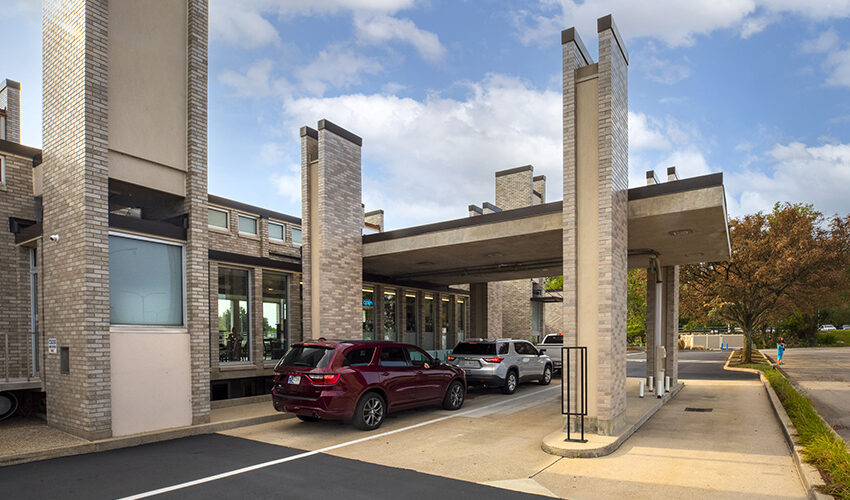NEWS
Modernist Bank Finds New Use as Coffee Shop
Harry Weese-designed building in Columbus is second location for Lucabe Coffee Co.
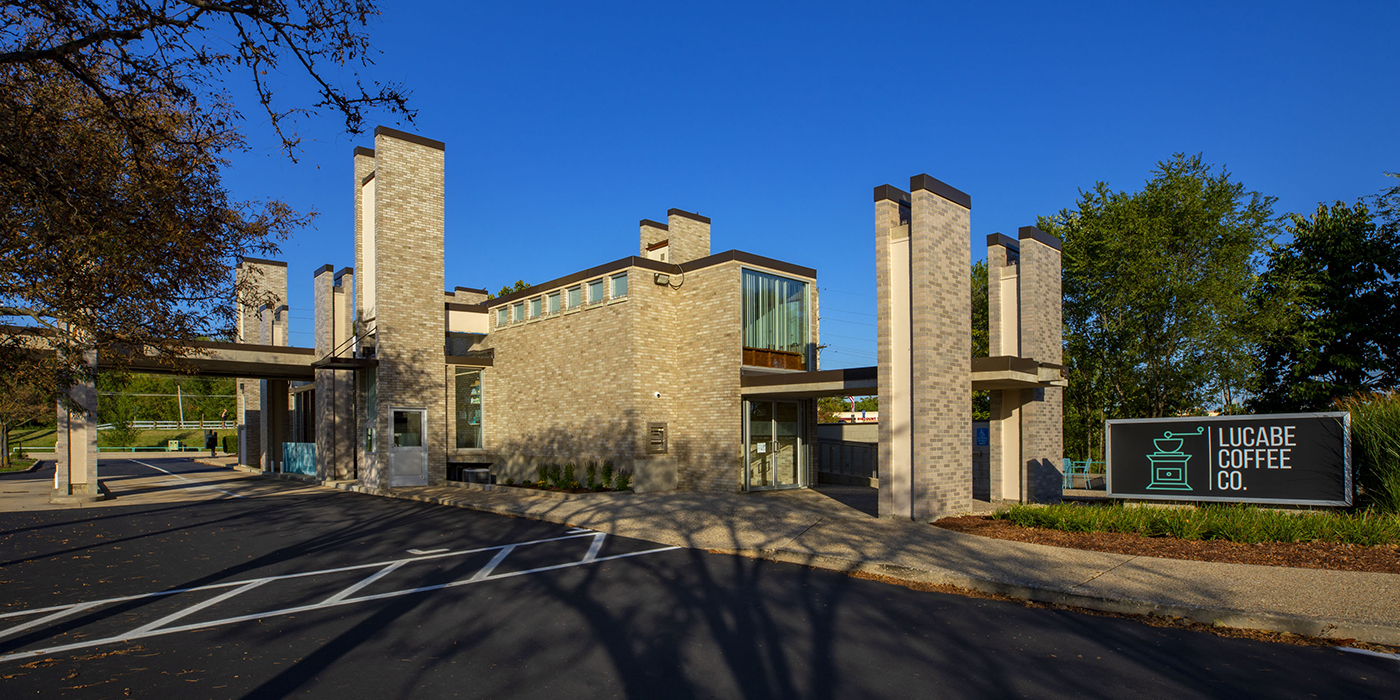
Anything but Automated
In Columbus, Indiana, one of the city’s many Modernist treasures is shining once again.
When it was built in 1961, the Irwin Union Bank and Trust catered to customers of the automobile age. In designing the bank on the city’s near eastside between Haw Creek and the newly constructed Eastbrook Plaza shopping center, Chicago architect Harry Weese incorporated drive-thru lanes on two sides of the split-level building. The gray glazed brick bank included four towers, each of which housed tellers in drive-up banking windows. The projecting towers’ juxtaposition with the rectangular building earned the nickname the “Dead Horse Bank,” drawing comparisons with a horse on its back, feet in the air.
Before they ever dreamed of opening a coffeehouse, Alissa and Tyler Hodge admired the modern bank when they moved to Columbus in 2012 for Tyler’s job at Cummins, Inc. They saw a niche for a specialty coffee shop in the city and launched a successful crowdfunding campaign in 2016 to bring Lucabe Coffee Co. to Columbus’s downtown. Inspired by the coffeehouse’s success, they were considering a second location in 2019 when they found out that First Financial Bank—the Weese-designed bank’s last owner—was closing. The Hodges jumped at the opportunity to buy the landmark bank.
Since this was their first experience adapting a historic building, the Hodges consulted with Indiana Landmarks’ affiliate Landmark Columbus Foundation to plan the bank’s adaptive reuse. The organization connected them to local architects and other companies that could advise on modifying the building in way that honored its architecture.
When the Hodges purchased the bank, rows of cubicles closed off the once-open interior. The couple removed the furniture and applied elbow grease to pull up yellowed carpet and three layers of adhesive glue, exposing original green and gray slate floors that fortunately matched the new coffeeshop’s color scheme. Most of the building had been completely overhauled following a flood in 2008, but Weese’s cantilevered design required creative solutions to hide new mechanical and electrical systems to support the addition of a bathroom and coffee bar.
In one of the towers, where a teller once processed deposits, today a barista serves up orders to drive-thru customers. Modifying the space presented a design conundrum, as the tower’s base sits a few feet below the main floor of the building and coffee bar. Designers met the challenge by installing a ladder, with a door to provide exterior access from the lower level. On the other side of the building, outdoor seating overlooking Haw Creek lines the drive-thru. Its proximity to the nearby Columbus People Trail provides easy access for cyclists and pedestrians.
The Hodges also consulted Weese’s original blueprints and concept drawings, repurposing them as artwork in the coffeeshop. The historic vault now holds a children’s play area complete with climbing wall, supporting the Hodges’ commitment to having a business where kids are as welcome as their parents. Along with serving as a coffeeshop during the day, the Hodges make the bank available for small private events, including a wedding reception for a couple who had their first date at Lucabe.
The building’s conversion won a prestigious Commercial Design Citation of Merit in 2022, one of a dozen Modernism in America awards given by Docomomo US, a nonprofit “dedicated to the documentation of buildings, sites and neighborhoods of the modern movement.”
The Hodges still have a number of items on their to-do list, including tuckpointing masonry and replacing the ’90s-era windows. They also plan to nominate the building to the National Register of Historic Places, supported by a grant from Indiana Landmarks’ Indiana Modern affinity group.
“It’s such a special space, and we’ve been proud to serve the community by preserving this piece of historic architecture in a way that all can experience it,” says owner Tyler Hodge.
This article originally appeared in the March-April 2023 issue of Indiana Preservation, Indiana Landmarks’ bi-monthly member magazine.
Stay up to date on the latest news, stories, and events from Indiana Landmarks, around the state or in your area.

